Brainstorming is simple right? You just get some smart engineers together, start coming up with ideas, and wait for a magical design to appear! Nothing could be further from the truth.
Like other creative engineering activities, preparing, running, and postprocessing a team brainstorming session is a skill that must be developed. In this article we will outline a set of foundational principles and a simple framework for running high quality brainstorming sessions for your product engineering projects. The goal is to give you a toolkit to prepare and run effective brainstorms and then translate the output of these brainstorms into viable concept designs to explore in further detail.
Under this framework, there are three primary phases involved in running a successful brainstorming effort - preparation, running the brainstorm, and postprocessing the output. This article covers each phase in detail.
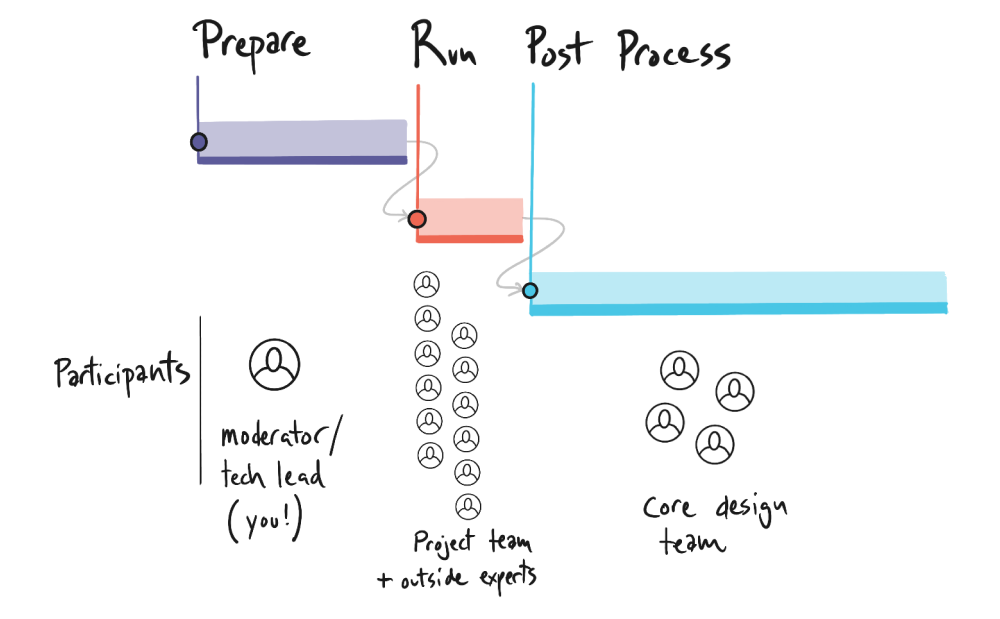
This is not the only way to run brainstorms, but it is an effective and repeatable method that you can implement quickly.
Understand why you are brainstorming
Before you run a brainstorm, you should know exactly why you are brainstorming. Brainstorming can move the needle on your project in a few key ways:
- Gathering knowledge. Bring smart engineers together and get folks thinking about the important problems in the project. You can rapidly capture a large quantity of candidate solutions for further evaluation.
- Add breadth to a solution space. Brainstorms are a great way collect a range of solutions, particularly if your brainstorm participants are multi-disciplinary and/or have a variety of different career experiences. Brainstorms have the unique ability to capture ideas from a place of relative ignorance about other project constraints. This tends to reveal creative solutions because participants don’t have any baggage associated with the project when they join a fresh brainstorm as an outside participant.
- Add depth to a solution space. Subject matter experts may know just the right technology or design approach to tackle a specific problem.
- Get unstuck. If you are stuck on a particularly thorny problem, brainstorms are a great way to work through roadblocks by injecting new creative solutions to consider and build upon.
- Energize your team. Brainstorms are fun! If you want to kick a design phase off with a bang, a brainstorm can energize and catalyze your team while laying the foundations for concept designs.
If you aren’t addressing any of the above pain points, consider if a brainstorm is actually what you need to make progress.
Prepare
The success (or failure) of a brainstorm is dictated by preparation and planning that happens well in advance of any ideation. Here’s what you should keep in mind when you are planning your next team brainstorming session.
Craft a useful problem statement with a test run
The most important part of brainstorm preparation is the problem statement or prompt. What specific question do you want participants to address?
We recommend an iterative process for generating useful brainstorm prompts.
- First create a candidate prompt.
- Spend 10 minutes coming up with ideas that address the prompt. You should be able to generate about 7 - 10 ideas in this amount of time. Each idea should be embodied in a single page sketch with a sharpie. Sketches should take 1 minute or less.
- Evaluate your output. If you only have 4 ideas or your output is too specific, consider broadening the prompt. If you generated 20 ideas but they aren’t specific enough to be helpful, consider focusing your problem statement.
- Iterate on the above steps until you find a good balance of focus and range in your output.
Obviously, this preparation takes work! But it pays off enormously by ensuring the output of your brainstorm is actually useful. The right prompt keeps your brainstorm from going off the rails.
Additional points of preparation
- Schedule your brainstorms at the right time for your team. 10AM on a Tuesday is usually a better time to be creative than 4PM on a Friday. Pick a time that makes sense for all participants.
- Invite the right people. Carefully select your brainstorm participants based on their experience, subject matter expertise, and temperament. A diverse set of participants is likely to yield a diverse set of solutions. Also remember that ideating from a place of ignorance can generate the most transformative and bold solutions to complex problems. Pro tip: A good brainstorm has at least 5 participants, and no more than 15. 6 to 12 people can generate a large set of ideas while still being easy to moderate.
Run your brainstorm - set up, ideate, and moderate
Here is our guidance for setting up a great brainstorm, generating and capturing a wide range of ideas, and keeping your brainstorm participants on track.
Set up a creative environment
Comfortable and happy people can ideate freely, so help your participants get settled. Bring snacks and coffee/tea to lighten the mood. Brainstorm in a well lit room that is large enough to accommodate everyone on the team. Usually a large conference room with comfortable chairs, a large table, and a whiteboard works well.
Present your problem statement
Present your problem statement to all brainstorm participants. Block out some time to field questions and clarify your prompt. Make sure everyone understands the prompt before starting to ideate. Here’s an example prompt for a fictional medical device development program.
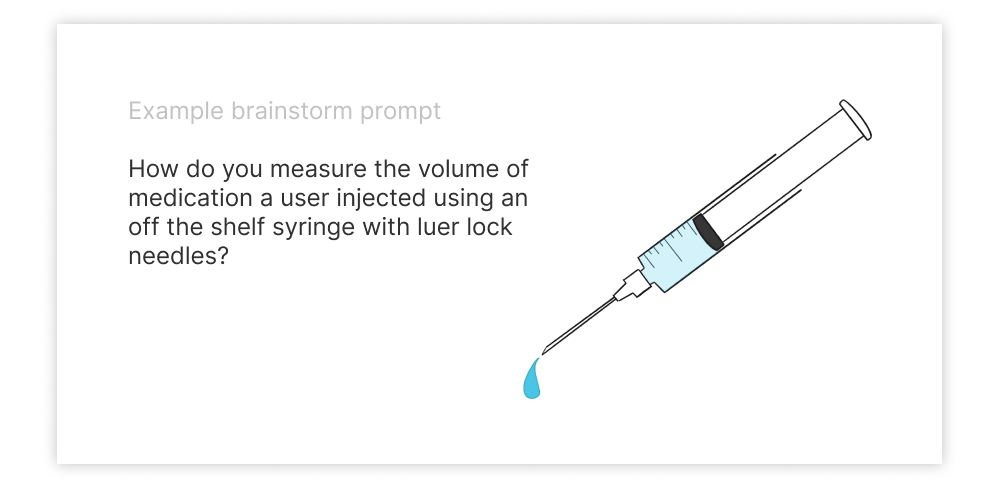
Seed the discussion
It can be helpful to grease the wheels of creativity by “seeding” the solution space. You can do this by showing some candidate solutions, mechanisms, or concepts that relate to your problem. Continuing with our injection measurement prompt, you might choose some images that show a range of measurement methods or fluidic systems in other products. Rather than being specific, your seeding should expand the range of possible solutions in the minds of participants. Here are some images used to seed our example prompt.
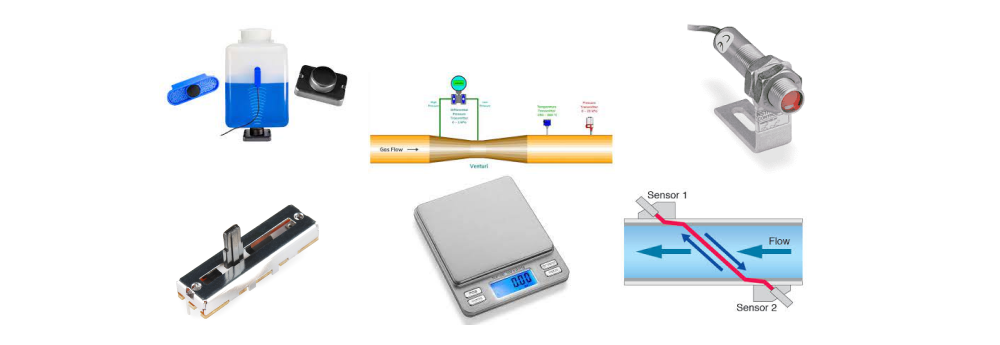
Ideate
Now give your participants the time and tools to generate good ideas. It’s a great practice to capture each idea by sketching with a sharpie on a single 8.5” x 11” page or large post-it. The sharpie prevents the sketch from being too detailed and using an entire page allows participants to sketch loosely and freely. The point is to capture the essence of the idea and not get bogged down in details (under 1 minute of sketching and explanation).
Once an idea is sketched, it should be presented to the entire group and given both a number and a name. Here’s an example sketch that shows how quick and low fidelity these concepts should be.
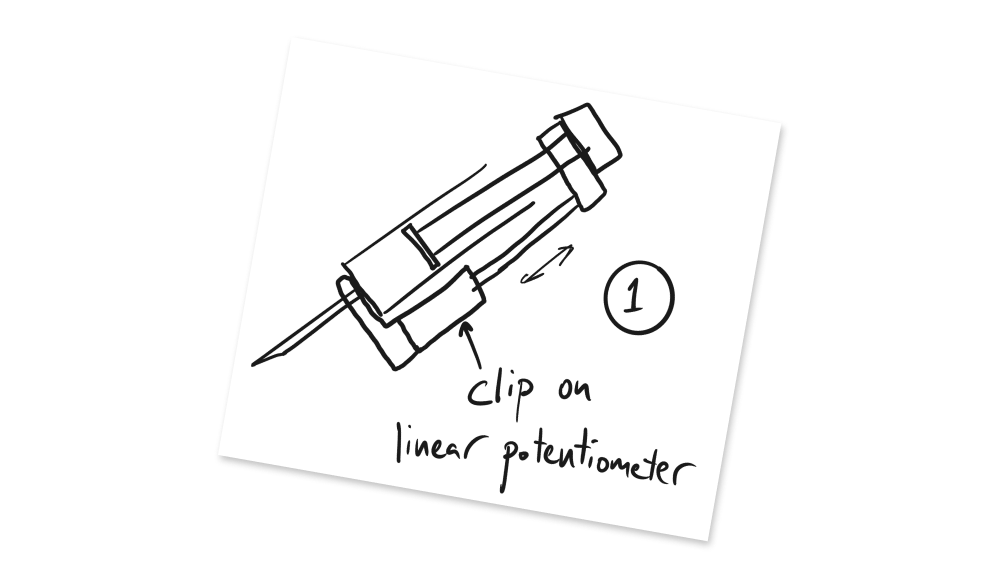
Be sure folks know that they should pay attention to each idea and that they are encouraged to build off each other's ideas. This can generate a very productive and competitive momentum where participants are freely expanding the solution space in unexpected and interesting directions.
Moderate
Running an engineering brainstorm is a leadership role, so stifle your urge to spend all your time participating in the ideation. Good moderators focus on the following:
- Ensure that every concept gets a name and number, and any additional description needed to identify it after the brainstorm is over. ex: (2) piggyback potentiometer Pro tip: write each concept name and number on a whiteboard so everyone can see the names of previous concepts.
- Present each concept to the group. Make sure all brainstorm participants are listening to a single concept being presented at a time so that everyone has the opportunity to build off of each idea.
- Establish a judgement free zone. Evaluation and judgement of ideas is the fastest way to shutdown an engineering brainstorm. No idea is off limits in a good brainstorm, so be sure to encourage wild ideation and the combination of different concepts. Pointing out the flaws in each idea (and there will certainly be many flaws) is the enemy of psychological safety. Good moderators create a safe space for ideas to flow.
- Go for quantity. You want to end a one hour long engineering brainstorm with more than 60 candidate ideas.
- Guide the discussion. As the moderator, you know the project better than anyone. It’s your responsibility to ensure that the entire solution space is explored. If there are ideas you want expanded upon or parts of the solution space left unexplored, guide the team to ideate in that direction. Reserve the last 10 minutes for this kind of exploration.
Post process
Post processing helps you translate your raw brainstorming output (rough ideas embodied in crude sketches) into a handful of concept designs worthy of investing serious design effort. Brainstorm output on its own is worthless without a good postprocess. Keep in mind that post processing is a collaborative process. It should be done with your primary project team members, not everyone involved in the ideation phase of the brainstorm.
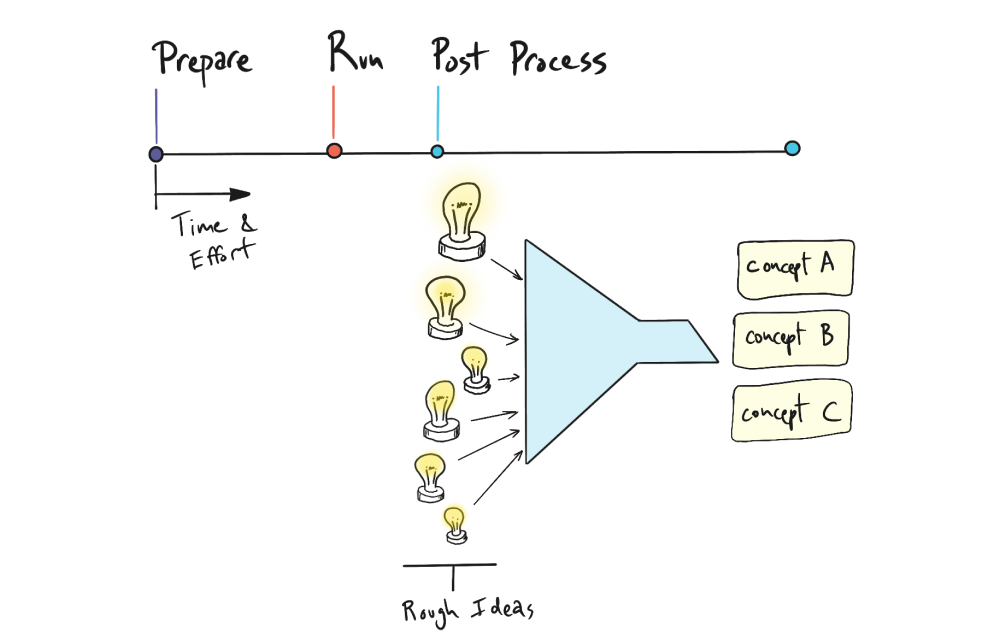
Here is a simple set of post processing steps you can follow after your brainstorm ideation is complete.
Organize output - categorize and group ideas
To get a handle on the the entire solution space it helps to categorize your output. Come up with simple groups in order to lump similar ideas together. You should be categorizing based on similarity of fundamental principles. Don’t think too hard about it, a few descriptive categories will naturally appear.
Pro tip: Scan each numbered sketch and upload them to a digital whiteboarding tool (Miro or Mural) or drop each image into a cell in a Google sheet.
Initial down-selection through anonymous voting
Conduct a simple voting exercise (ideally anonymous) where everyone involved in the post processing effort selects their top 3-5 concepts from the brainstorm. After voting, have a discussion amongst the team about each concept that received votes. This discussion will naturally reveal some of the criteria for evaluation that you will use later for a more thorough down-selection process.
Pull out this subset of concepts and see if you can expand on them. Ask yourself if you can combine the preferred concepts with concepts that were not chosen to make a more complete or promising solution. This is the process of cross-pollination. The best design ideas usually leverage some aspects of multiple concepts in an integrated design. The goal is to get to a subset of refined concept designs that each have legitimate merit and might be worth further evaluation through detailed engineering work.
Final down-selection
With your cross pollinated and refined output, you can begin a more rigorous down selection process. Final down selection helps you determine what concepts from your engineering brainstorm are worth investing significant engineering effort toward development. At this stage a simple Pugh chart (decision matrix) can help drive discussions and determine which concepts are worth further detailed design. There is a bit of art and a science to concept down selection that is certainly helped by relevant project experience.

Note: we’re working on a free web based Pugh chart tool. If you want the google sheet template that it is based on just send an email to support@fiveflute.com and put ‘Pugh Chart’ in the subject line.
Takeaways and a note on brainstorming research
Brainstorming works very well for engineering problems if you have a methodology. You need to be prepared well in advance of getting your group together, and you need to have a practical approach to post processing that works for most projects. The method and tips outlined above should arm you with an approach that you can adapt to the vast majority of greenfield electromechanical design problems. Plus its fun!
Note: Astute readers might be ready to note that there is evidence that brainstorming is a “waste of time” according to a subset of academic literature and pop science in the Harvard Business Review. This literature ignores the value of carefully crafted prompts, the logistical difficulties of getting everyone to do the brainstorming independently, thoroughly and concurrently, as well as the practical approaches to post processing outlined above. The goal of a brainstorm is not to solicit the most creative ideas,…the goal is to move the project forward to a good solution in an efficient manner. Most problems need timely and practical solutions, not the most clever approach. Food for thought, cheers!
P.S. If you have a different brainstorming method that you think our readers should know about, let us know! We’d love to hear from you.
Five Flute - Next generation collaboration for hardware product development
If you are a design engineer or technical project manager and you want to design better products in less time, consider Five Flute. It’s the fastest way to share, review, and improve your engineering designs. From engineering drawing reviews to 3D design reviews of complex parts and assemblies, Five Flute is built for modern engineering teams that want to move faster without making mistakes.
